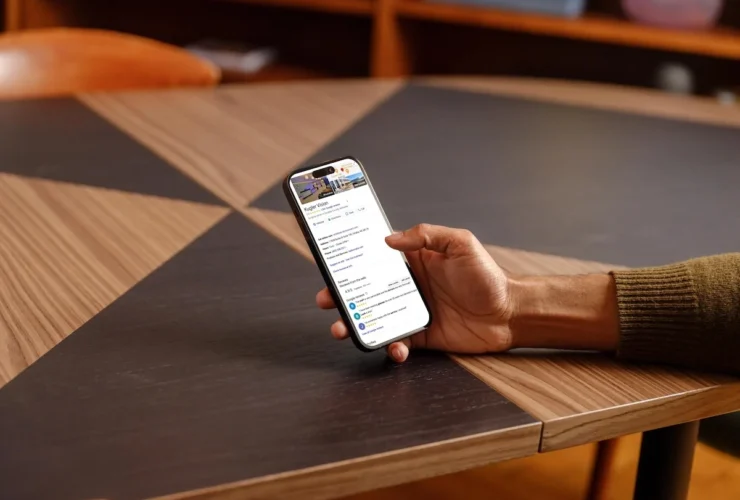From Bad LASIK Candidate to Brand Evangelist: A Patient’s Perspective
This post was originally published in MillennialEYE.
I’ve been living with the inconvenience of glasses and contacts for the past 20 years. I had thought about getting LASIK for a long time, but, for one reason or another, I had never pulled the trigger. (Ironic, considering that I help refractive surgeons improve their marketing to attract more patients like me and build their dream practices—but I digress.)
This past summer, I decided it was time—I was finally ready to stop “renting” my vision and say goodbye to glasses and contacts once and for all. At first glance, I was the perfect LASIK candidate: I’m 29 years old, in good health, and with a stable prescription—no dry eye, no astigmatism. So, I scheduled a consultation at my local practice. The onboarding process was flawless. I filled out some forms and demographic information online so that I could be seen immediately upon entering the office. At first, everything was great: I was seen quickly, and the myriad scans and tests went off without a hitch. The staff was very friendly, and the practice’s strict COVID-19 protocols left me feeling at ease. But then came the bad news: Unfortunately, there were some red flags that meant I wasn’t a good LASIK candidate after all.
I had a relatively strong prescription, which I already knew. That wouldn’t necessarily have been a problem if not for the mild keratoconus and corneal ectasia they also found. Put them all together and undergoing LASIK could mean more serious vision problems for me down the road—not a risk worth taking. Needless to say, I was pretty disappointed. I would have to remain dependent on my glasses and contacts after all? In the weeks following my LASIK let-down, the bummer of the bad news has worn off, but the immense the respect I have for my would-be surgeon and his practice hasn’t. I’ve been thinking about my LASIK consultation experience and the lessons it holds for other ophthalmologists. (As mentioned before, I spend my days helping physicians in private practice deliver exceptional experiences to their patients, so I think about this kind of thing a lot.)
I believe that my less-than-ideal-but-also-still-exceptional experience holds three key lessons for surgeons who must deliver bad news to patients, as outlined below.
#1: Communicate Clearly
The first lesson in delivering bad news to a patient is don’t beat around the bush. Bad news doesn’t get better over time. Get right out there and say it. Leave no room for misinterpretation. After coming into the exam room, my surgeon got right down to business: “Crawford, I’ve looked at your chart, and frankly I have some concerns. I hate to be the bearer of bad news, but your eyes have some red flags. Unfortunately, you’re not a good candidate for LASIK.” With the bad news out in the open, we had an opportunity to address the concerns he saw—and, more importantly, why they disqualified me from a procedure like LASIK. My surgeon wanted to exercise caution in my case because any intervention would likely cause more visual problems in the longer term. “First, do no harm,” indeed.
Importantly, my surgeon took enough time to discuss alternatives that may be better options for me. He explained why an implantable collamer lens (ICL) procedure could be a better fit in my case and that the Visian EVO ICL (pending US regulatory approval) may be the perfect option if I was still interested in vision correction down the road.
The news that LASIK wasn’t an option for me was disappointing, but clear communication from my surgeon that I did still have options was a welcome relief.
#2: Communicate with Empathy and Compassion
The second lesson to learn from my experience is to communicate with an abundance of empathy and compassion for your patients. Speaking as a patient, I don’t think it’s possible to overcompensate on this one. I knew that my surgeon was busy and that, as soon as he left me, he would head straight into another exam room to discuss results with another patient. However, I didn’t feel like “just another patient,” and my visit didn’t feel rushed. My surgeon took ample time to adequately discuss his assessment of my situation and explain to me why LASIK wasn’t a good choice.
Surgeons may see dozens of patients per day in rapid succession, and overall the process has likely become very routine. But, for patients, their visit represents a special moment. Deciding to come in for a consultation could be a big step for them. And, if they are a good candidate for surgery, it’s almost certainly a big financial commitment. Their experience at your practice will loom large in their minds, and every little detail will stand out. That’s why it’s crucial to communicate with empathy and compassion.
Importantly, communication doesn’t just mean speaking; it means actively listening with empathy and compassion as well. Your patients want you to understand any disappointment they may feel, and you can communicate why it is disappointing for you, too. Explain how you really wanted to help them achieve the visual freedom they’ve been longing for. Show them that you understand how frustrating it must be to live with glasses or contacts. Communicate that you truly want to help, but also clearly explain why moving forward isn’t a good idea.
#3: Remember Your Brand
It might seem counterintuitive to say that you should be thinking about your brand and your reputation—after all, shouldn’t it be about empathy toward the patient in a moment like this?
Well, yes.
But hear me out: Even when a patient no longer represents a financial opportunity for your practice, there is still an opportunity to strengthen your brand.
Why? Because your brand isn’t your logo. It’s not your fancy office or that great new website you built. Your brand is what people think about when they think about you.
That includes satisfied patients whose surgeries were a huge success, whose lives you’ve changed by giving them back their vision. But it also includes prospects (like me) who aren’t good candidates for surgery. And it includes people who have never set foot inside your practice but heard about an experience their friend or family member had with you. That’s why every interaction is so important, especially when the interaction between surgeon and patient entails delivering bad news.
This is not to say that your reputation should be your main concern in a situation like this. Of course, your patient should be your primary focus. But that doesn’t mean that you can’t work to cement a positive impression in the patient’s mind based on your communication—even when you have to deliver bad news. If you want to build a strong health care brand, you must make the most of every patient interaction.
In a moment when you must deliver bad news—perhaps the only thing that a patient will remember—communicating clearly and empathetically will do more for your brand than any other aspect of that patient’s experience. How you treat a patient has a profound impact on your brand and your reputation, even when that patient has nothing to “offer” you.
My surgeon did this. Because he communicated clearly, I walked away with not only a positive impression of him but also a more positive impression of his practice. Although I received bad news, I reflected in the days following on what a great experience I had from start to finish. I wouldn’t hesitate to send friends or family to that practice, even though I didn’t have surgery there.
Consider the inverse. If my surgeon hadn’t communicated with compassion, not only would I have been disappointed in the outcome of the consultation, but I also would have had a sour taste in my mouth from the whole experience. I’ve seen countless patients who had a poor experience at a practice—regardless of whether they were actually treated or not—post negative reviews online or tell their friends and family to stay away. That’s the kind of detractor you don’t want. Your patients can separate the reality of their medical condition from the overall experience they had. Even if you may need to deliver bad news to a patient, it doesn’t necessarily have to be a bad experience for them.
Goodwill is free. Treating someone well costs no more than a few extra seconds of your time, but it can pay dividends and leave a lasting impression. A great experience that ended with bad news seems counterintuitive, but it is possible—it happened to me.








